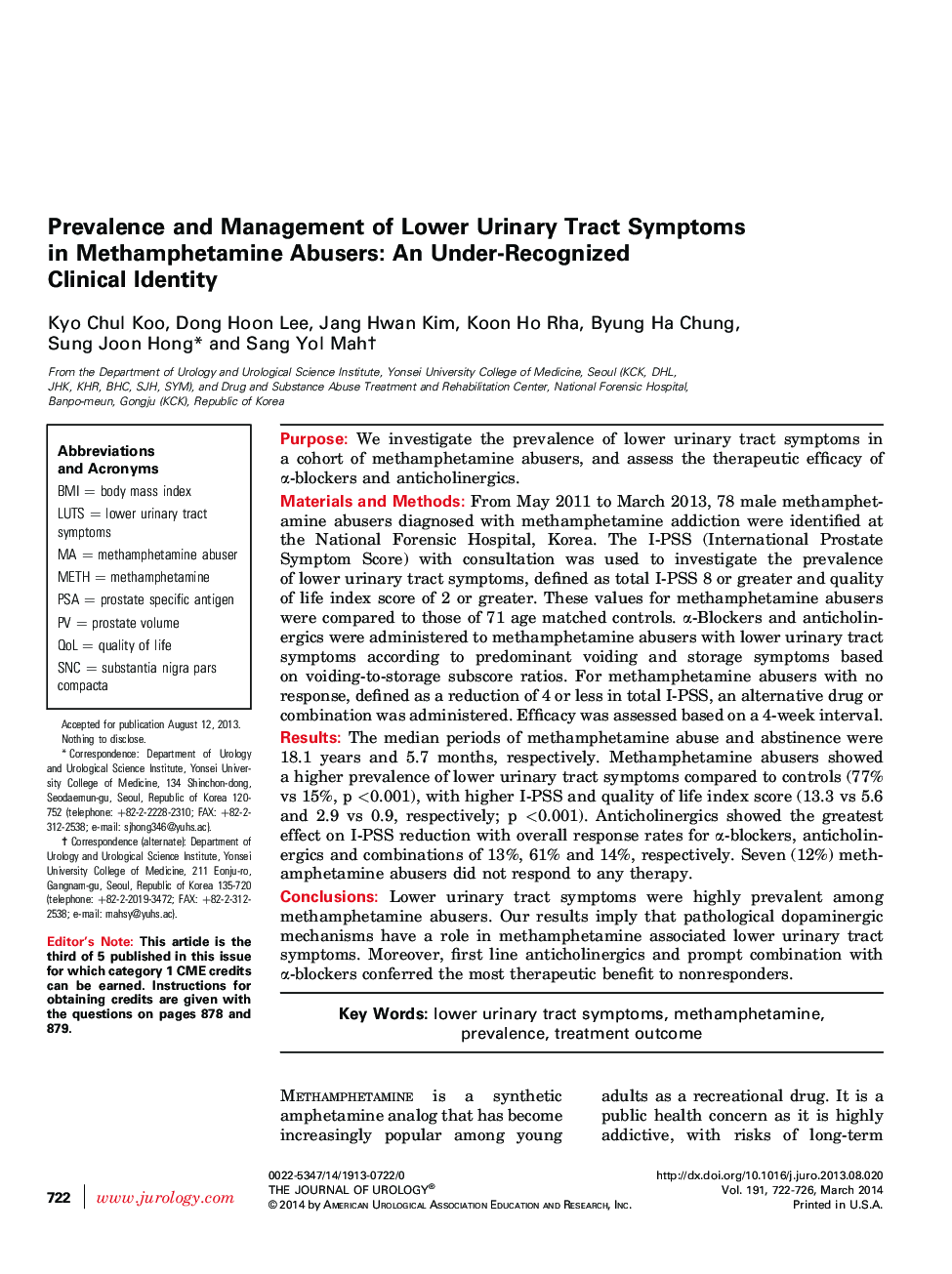| کد مقاله | کد نشریه | سال انتشار | مقاله انگلیسی | نسخه تمام متن |
|---|---|---|---|---|
| 3862709 | 1598908 | 2014 | 5 صفحه PDF | دانلود رایگان |
PurposeWe investigate the prevalence of lower urinary tract symptoms in a cohort of methamphetamine abusers, and assess the therapeutic efficacy of α-blockers and anticholinergics.Materials and MethodsFrom May 2011 to March 2013, 78 male methamphetamine abusers diagnosed with methamphetamine addiction were identified at the National Forensic Hospital, Korea. The I-PSS (International Prostate Symptom Score) with consultation was used to investigate the prevalence of lower urinary tract symptoms, defined as total I-PSS 8 or greater and quality of life index score of 2 or greater. These values for methamphetamine abusers were compared to those of 71 age matched controls. α-Blockers and anticholinergics were administered to methamphetamine abusers with lower urinary tract symptoms according to predominant voiding and storage symptoms based on voiding-to-storage subscore ratios. For methamphetamine abusers with no response, defined as a reduction of 4 or less in total I-PSS, an alternative drug or combination was administered. Efficacy was assessed based on a 4-week interval.ResultsThe median periods of methamphetamine abuse and abstinence were 18.1 years and 5.7 months, respectively. Methamphetamine abusers showed a higher prevalence of lower urinary tract symptoms compared to controls (77% vs 15%, p <0.001), with higher I-PSS and quality of life index score (13.3 vs 5.6 and 2.9 vs 0.9, respectively; p <0.001). Anticholinergics showed the greatest effect on I-PSS reduction with overall response rates for α-blockers, anticholinergics and combinations of 13%, 61% and 14%, respectively. Seven (12%) methamphetamine abusers did not respond to any therapy.ConclusionsLower urinary tract symptoms were highly prevalent among methamphetamine abusers. Our results imply that pathological dopaminergic mechanisms have a role in methamphetamine associated lower urinary tract symptoms. Moreover, first line anticholinergics and prompt combination with α-blockers conferred the most therapeutic benefit to nonresponders.
Journal: The Journal of Urology - Volume 191, Issue 3, March 2014, Pages 722–726
